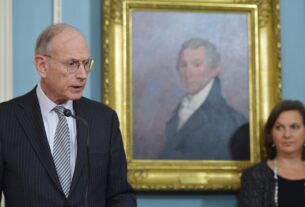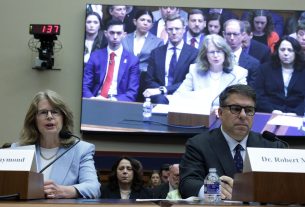This Saturday marks the 20th anniversary of the 9/11 attacks. The trauma of the event and its aftermath—for New York, the United States, and the world—remains largely unprocessed, which makes ongoing debates around memory and memorialization emotionally fraught. At Ground Zero in Lower Manhattan, the National September 11 Memorial & Museum occupies much of the former World Trade Center complex and has become a major international tourist attraction since it opened in 2014. But critics have charged the museum with re-traumatizing visitors while failing to provide context about US policies in the Muslim world that paved the way for the attacks, or about the disastrous, criminal wars and national security measures that leaders in both parties subsequently used 9/11 to justify.
A recent documentary, The Outsider, depicts the debates among the museum staff over how best to memorialize 9/11; the title refers to the institution’s former creative director, Michael Shulan, whom the film presents as having been in frequent conflict with his colleagues over whether the museum should provoke visitors to wrestle with difficult questions about the attacks. Last month, I visited the museum for the first time as part of my reporting for a New York Magazine piece about the documentary and the questions it raises. I came away agreeing with many of the museum’s critics: Rather than confront visitors with hard truths, the museum prefers to bask in a grotesque nostalgia.
Shulan declined to be interviewed for that piece, or for any other media coverage of The Outsider. But once my article was published, he reconsidered and reached out by phone, and we got to talking—about his background in the downtown arts scene, how he helped to acquire what is most likely the largest existing archive of 9/11 photos, how he became involved with the 9/11 Museum, what he thinks of the documentary, and how he thinks the museum falls short of his original vision. One of our conversations, which has been edited and condensed, became this week’s newsletter (to which you can subscribe here). I hope it can be one small part of a larger and urgently necessary reevaluation of the memory and legacy of 9/11.
David Klion: What was your life like prior to the 9/11 attacks?
Michael Shulan: I moved to New York and settled in SoHo in the late 1970s. It was an exciting time to be there and a very different place than it is today. Some friends and I bought a little nondescript building and rented out the ground floor to a clothing shop for many years. In August 2001, the shop decided not to renew its lease, because they thought the neighborhood had gotten too trendy, so we were looking for a new tenant and I was using the space as an office. I was working on a novel.
DK: How did you experience the day itself?
MS: The morning of September 11th, I had just returned to the empty storefront after walking my son to school, when I heard a woman crying in the street. Outside, I saw a lot of people looking at the north tower of the World Trade Center, which was emitting black smoke. I stood there watching it for a while. Then I went to my son’s school and picked him up, and as we were walking home, the towers disappeared from sight. We saw people walking north from downtown covered in thick dust. That afternoon, everything was closed, and I started wandering around in the neighborhood and made my way downtown, past police barricades, to Ground Zero. I was very struck by what I was seeing; I didn’t have a camera on me, but what I was seeing seemed so unreal that I realized it would make for extraordinary pictures. I was actually standing in front of Tower Seven when the police suddenly said the building was going to go down, so we all ran up Hudson Street.
The next morning, I saw that someone had taped up a sheet of newspaper from the previous day’s New York Times outside my building, and people were writing comments on it and taking pictures. I remembered that I had an old picture of the World Trade Center, so I taped it up next to the newspaper. For the rest of that morning, people wanted to touch the picture and take photos of it. I realized we had an empty storefront and weren’t going to find a new tenant anytime soon, so maybe we should start an exhibition. So I got together with some photographer friends, including Gilles Peress and Charles Traub, and a curator who recently died named Alice Rose George, and we put out a call for pictures. We called the exhibit Here Is New York: A Democracy of Photographs.
Much to our astonishment, it really struck a nerve. We had explicitly conceived it as an anti-media project, because the same traumatizing images were being shown over and over on TV, along with the same commentary. Our idea was to ask everyone to submit whatever pictures they thought were appropriate, and then anyone could come and look and decide for themselves what the narrative should be. The exhibition became extremely popular. We sold images for $25 and gave nearly a million dollars to the Children’s Aid Society of New York to help the children of undocumented workers and other people who weren’t being covered by other funds. We ended up doing more than three dozen of these exhibitions across the country and around the world over the next year, and a million people came to our little storefront alone.
DK: How did that lead to your involvement with the 9/11 Museum?
MS: When we were collecting these images, we weren’t asking for any rights. Every photographer retained their own intellectual property. We weren’t going to profit from this by selling or licensing these images. As we were drawing up releases to state this, we realized there might eventually be a museum at Ground Zero, and that these pictures were going to make for an extraordinary archive. So I asked the photographers whether they would consent to granting a hypothetical museum the rights to include their images, subject to certain conditions, and most of them agreed.
When the museum was announced, I got in touch with the team behind it, and said, “Look, we have what’s probably one of the largest archives of images of a single event ever assembled.” They asked me to come talk to them. I told them that when I visited Ground Zero the day of the attacks, I was reminded very strongly of something I had studied in college—the journey into the underworld depicted by Homer and Virgil, and the trope of reconciliation with the dead. I saw that as a very powerful metaphor for the underground museum they were proposing to build. I was asked to join the museum, which was not something I was completely eager to do. Our original project had not been an official or institutional project. But it also seemed to me that if they were prepared to offer someone with a nontraditional background like me a role, then it was probably something that I should do.
DK: How would you describe your experience over the next eight years, and the direction that you wanted to take the museum compared to your colleagues’ vision?
MS: I was given the title of creative director, but I wasn’t exactly sure what it meant. I was not a museum person, whereas most of my colleagues were. Ultimately, it meant I was there to help figure out what sort of museum we should be making, what form it should take, and what message it should convey. For the most part it was a collegial experience. We all basically agreed about what we then understood to be the political ramifications of the event, and about the kind of the museum it should be—at least at first. I wanted it to be a museum that was open, in which the narrative would not be overly assertive, and in which visitors would be given the opportunity to think for themselves. We should expose them to the facts and to the emotional realities and the stories of witnesses, but we shouldn’t impose a closed or finished narrative. Everyone has a stake in the story of 9/11. And if our understanding of the facts and meaning of 9/11 changed over time, I firmly believed that the museum should change with it.
DK: From the documentary, I gather that you faced some resistance to this premise.
MS: The Outsider is edited to make me into a protagonist who is at odds with his colleagues, which I don’t think was the case, for the most part. The film exaggerates our differences, but there is no question that I struggled with some of my colleagues to try to keep the museum’s narrative more open than it eventually became.
There was an episode at the tail end of my tenure, when it was incorrectly reported that I had tried to keep a particular picture out of the museum—as a result of which I was smeared by right-wing media. It was Thomas E. Franklin’s famous photograph of three firemen raising an American flag in a pose strongly reminiscent of the iconic photo of Marines at Iwo Jima. In fact, I was actually trying to put the picture in twice—once without comment in the first part of the historical exhibition, among thousands of pictures that were taken that day, and then, in a subsequent section, I wanted to show it alongside the Iwo Jima picture to try to unpack the iconography. I’m sure the photographer knew what he was doing, and the firemen probably did too. And that’s fine, but I wanted to actually explain the story so that people could think about that. That would have been emblematic of the approach that I wanted to take with the whole museum, which ended up not being as prevalent as I wanted it to be.
DK: What do you think The Outsider gets right or wrong about you, and about the museum?
MS: I’ll say without reservation that it was an honor for me to work on the museum, and it’s something I will always be proud of. My colleagues and I were all interviewed extensively for the movie, which I originally thought was going to be a Frederick Wiseman-esque, long process-oriented film about what it was to make the museum. But the filmmaker edited it into something very different than any of us were expecting. Twelve hours before the film was publicly announced, I found out that I had been edited into being the protagonist.
The film puts me in a very adversarial role, as a character who was at odds with his colleagues because he wanted to ask questions. The implication is that these questions were about things like the wars in Iraq and Afghanistan, Abu Ghraib, Guantánamo Bay, and the Patriot Act. The film makes it seem like I was the only one at the museum who was arguing for the inclusion of these things. I was certainly arguing more strongly for them to be included in the historical exhibition than anyone else outside of a few of my closest colleagues. But that was part of my role—to challenge my colleagues’ assumptions, just as it was part of their role to challenge mine. And in any number of cases, I was challenged, and I admitted that they were right and I was wrong. That’s a nuance I think is missing from the film.
DK: Do you agree with critics who say that the museum fails to address the mistakes that America made in the wake of 9/11, as well as those mistakes that might have led to 9/11?
MS: The challenge we faced is similar to the challenge Lower Manhattan and the country faced over the past 20 years: of evaluating ourselves and figuring out who we are and what our role is in the world. It’s no surprise the museum has struggled over this, and it was going to be controversial no matter what it did. I think in its current iteration, the museum is a success for many people. It provides a real place of solace and acknowledgement for people who lost loved ones, and for rescue workers who worked valiantly, many of whom have since become gravely ill. Parts of the museum work very well.
We all grappled with how to represent the aftermath of the attacks, and I think to some extent, we did not succeed—I include myself in that. We wanted the museum to be able to change and to adapt and add new information, and I don’t think the museum has done a good job of that.
DK: How would you want the museum to change?
MS: The 20th anniversary is a moment to take stock, and perhaps for a shift in how we look at 9/11, and even emotionally react to the event. I obviously don’t mean the many people who suffered unconsolable losses. But for the rest of us, it represents a moment to begin to look at history differently, and it would be appropriate for the museum to do that.
The Outsider does provide a service in illuminating, however imperfectly, the process of what went into building the museum. We were all doing our best, but now the museum needs to embrace the fact that the past 20 years have not gone well for us in so many ways. September 11th has had a great impact not only on our foreign policy and on other countries, but upon our lives here in the United States—in terms of data privacy and drone technology, the wars, the hideous situation in Guantánamo, and so many other things that need to be shown and explained to visitors. This is part of who we are as a country, and we need to be informed about how all of this came to pass in order to learn from it and figure out where we go from here.
David Klion is the newsletter editor for Jewish Currents.
The post What the 9/11 Museum Could Have Been appeared first on Jewish Currents.



